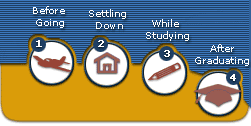 |
 |
 |
 |
 |
 |
 |
| Privacy Policy |
| Disclaimer |
| Terms & Conditions |
|
The Origins of Easter By Yvonne Liu
Falling in the spring, the word "Easter" is believed to have come from the Scandinavian "Ostra" and the Teutonic "Ostern," both goddesses symbolizing spring and fertility. The rabbit was hailed as a symbol of fertility, and thus its eggs were painted in bright colors and given as gifts during this springtime celebration. Of course, the most commonly known celebration of Easter here in the United States is tied to that of the Christian religion. Children are dressed in their "Easter best," colorful dresses for girls and neatly pressed suits for boys. Families attend church, followed by a Easter brunch or dinner. There is the Easter egg hunt and story-telling of the Easter Bunny, too. Many early Christians were of Jewish origin and hence brought up in the Hebrew tradition. Easter was then thought of as part of the Passover festival, which is celebrated for 8 days and commemorates the flight and freedom of the Israelites from in slavery in Egypt. On the other hand, Western churches observed Easter on the first Sunday after the full moon of the spring equinox. Hence the holiday does not fall on an exact date each year.
What About the Eggs? Again, eggs embody fertility and "new life," and thus play an important symbolic role towards the resurrection of Jesus. Originally, the eggs were painted in bright colors to represent the sunlight of spring, but different cultures have developed their own egg decorating ways. For example, in Greece eggs are painted crimson to honor the blood of Christ. Eggs are also a part of Easter games. Two traditional games are the Easter egg hunt and the Easter egg roll. On Easter morning the children join in a search to locate the eggs hidden by the Easter Bunny while they were asleep. The child who finds the most eggs wins a prize. Many communities also sponsor community-wide egg hunts by hiding eggs in public places, encouraging neighbors to interact with each other. The Easter egg roll is simple. Whoever rolls an egg the farthest without breaking the egg is declared the winner. What About the Bunny? A visit from the Easter Bunny is a much anticipated event, second to perhaps Santa Claus. Introduced to American Easter traditions by German settlers in the 1700s, children believed if they were good, then the Easter Bunny would lay a nest of colored eggs. Boys would use their caps and girls would use their bonnets to make the nests. Later on, the tradition of the Easter basket would spread. On Easter Sunday, if you see groups of people young and old looking around houses and other places for colored eggs, don't be alarmed. Feel free to join in. Maybe the Easter Bunny has a surprise for you! Source: Holidays.net |
 |
| ||||||||||||||||||||||||||||||
|
| ||||||||||||||||||||||||||||||
Home | About iStudentCity | Job Opportunities | Contact iStudentCity Hall
Copyright©2000-2009, iStudentCity.com. All Rights Reserved.
 What do colored eggs and bunnies have to do with Easter? In Christian circles, Easter is celebrated
as a religious holiday, marking the resurrection of Jesus Christ. But the celebrations of Easter have
their roots in pagan customs not associated with religion as well.
What do colored eggs and bunnies have to do with Easter? In Christian circles, Easter is celebrated
as a religious holiday, marking the resurrection of Jesus Christ. But the celebrations of Easter have
their roots in pagan customs not associated with religion as well.
 Easter falls at the end of the Lenten season, the 46 days of which followers give something up, much
in the same spirit as that of
Easter falls at the end of the Lenten season, the 46 days of which followers give something up, much
in the same spirit as that of 